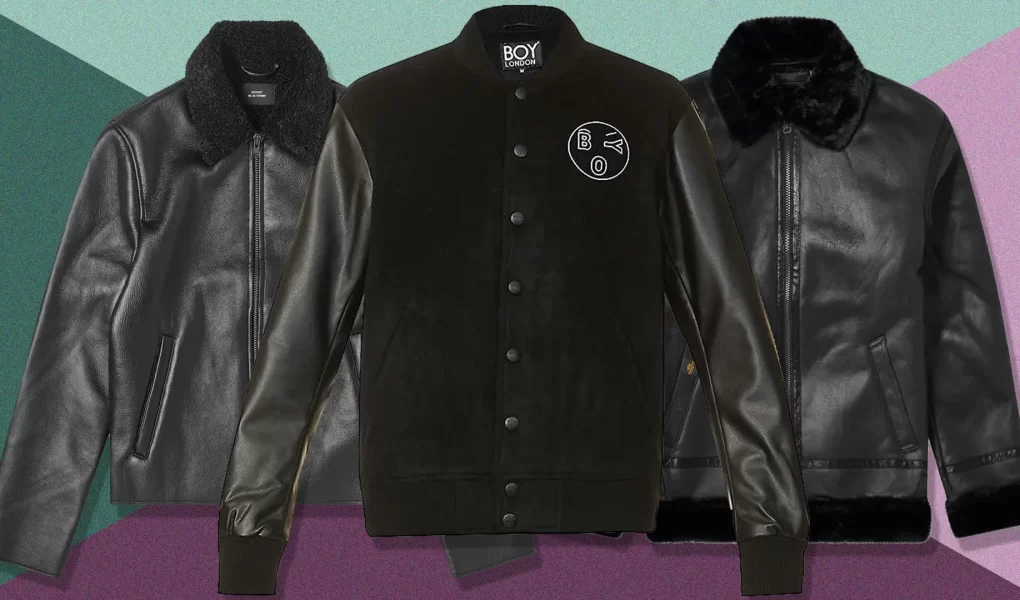Since ancient times, leather has served a variety of purposes as a material. Leather is a resilient, cozy, and adaptable material that has been used for a wide range of products, including clothes, footwear, accessories, furniture, and much more. Natural leather, which is derived from animal hides, and synthetic leather, which is derived from synthetic materials, are the two main forms of leather that are readily available. We shall contrast the two primary varieties of leather in this article and investigate which is the better option.
Table of Contents
Bovine Leather
More than 75% of leather, that you can find on market – is bovine leather. It is known as cowhide and is the most widely used sort of leather. Cowhide is created from the hide of cows. Bovine leather is a tough, resilient natural material with a distinctive texture and grain pattern. It is a well-liked material for clothing, footwear, and accessories since it is versatile and comfortable to wear.
Bovine leather is also a sustainable material. Being a byproduct of the meat business, the hides required to create bovine leather would otherwise be destroyed. We are making use of a resource that would otherwise be wasted by turning these hides into leather. Also, the tanning procedure used to produce bovine leather can be carried out in a manner that is more environmentally friendly by utilizing organic ingredients and procedures.
The longevity of bovine leather is one of its key advantages. Bovine leather is robust and resistant to a lot of abrasions. With the right maintenance, it may last for years and is resistant to scratches and abrasions. This makes it a great option for items like shoes, backpacks, and belts that must be strong and long-lasting.
Also, the natural texture and grain pattern of bovine leather give it a distinctive appearance. Animal skin has a unique natural pattern, also called grain pattern. That texture and pattern cannot be replicated by mass-produced synthetic leather. That’s why bovine leather has a look-real natural appearance, that many people find pretty.
Bovine leather does, however, have some disadvantages. First off, it costs more than synthetic leather, which makes it less affordable for some people. Furthermore, if not done correctly, the tanning procedure used to produce bovine leather can be damaging to the environment. The tanning process uses chemicals such as chrome or, in some cases, alum. Those metal chemicals may cause water pollution or another environmental impact.
Synthetic Leather
Also known as faux leather or vegan leather, artificially created leather is designed to look and feel like real leather, but made from synthetic materials. Polyurethane (PU) and polyvinyl chloride (PVC) are the two main materials used for this purpose, creating a range of textures and hues.
The fact that synthetic leather is frequently less expensive than leather from animals is one of its key advantages. If you prefer the beautiful appearance and cozy feel of leather, but don’t want to spend too much money on real leather products, this makes it a more viable option. Also, synthetic leather is frequently simpler to maintain than leather from animals. It is stain-resistant and is simple to clean with a damp towel.
For those who care about animal welfare, synthetic leather is also a moral option. Synthetic leather, as opposed to bovine leather, is not produced using animal hides and does not support the meat industry. Because of this, it becomes a more compassionate choice for those who want to avoid consuming animal products.
Yet, there are several disadvantages to synthetic leather. First of all, it is not even close to durability, compared to cowhide leather from cattle. Synthetic leather is weaker and less resilient than genuine leather, and it is easily torn and scratched. As a result, items produced from synthetic leather might not last as long as those made of genuine leather.
Additionally, synthetic leather does not have the same texture and grain pattern as bovine leather.
Synthetic leather frequently has a grain pattern and texture that are artificially produced, which can make it appear less authentic and natural. For those who prefer the appearance and texture of genuine leather, this may be a disadvantage.
The environmental impact of synthetic leather is another potential disadvantage. Synthetic leather is frequently created from materials that are not biodegradable and can take hundreds of years to break down in landfills, although it may be a more moral choice for animal welfare. In addition, the use of chemicals and energy during the creation of synthetic leather can add additional greenhouse effect and pollution due to emissions.
Comparison
When comparing bovine leather and faux leather, or any other types from synthetic artificial materials, it is important to consider a range of factors, including durability, cost, appearance, and environmental impact. While both materials have their advantages and disadvantages, the choice between the two ultimately comes down to personal preference and priorities.
Durability
In general, bovine leather is thought to be stronger than synthetic leather. It is more resistant to tearing and damage, stronger, and more resilient. This makes it a better option for items like shoes and bags that must survive heavy use and wear.
However, it is important to note that the durability of bovine leather depends on how it is cared for. If not properly maintained, any leather types including cowhide and bovine leather, can become dry, or even cracked, and damaged. On other hand, synthetic leather, such as faux, requires significantly less maintenance and care, but it is also more prone to damage and may not last as long as bovine leather.
Cost
Bovine leather is generally more expensive than synthetic leather. This is because it is a natural substance that necessitates a labor-intensive and intricate manufacturing process. The quality of bovine leather can also be influenced by the grade of the hide used and the tanning process.
Contrarily, any synthetic leather type cost less than real leather from animals. For those who prefer the appearance and feel of leather but cannot afford actual leather items, this makes it a more viable alternative.
Appearance
Distinctive and genuine bovine leather appearance due to its natural texture and grain pattern. Animal skin produces this texture and pattern, which cannot be imitated by synthetic materials. Because of this, bovine leather has a genuine, natural appearance that many people find appealing.
Contrarily, synthetic leather can be made to have a wide range of colors and textures. It can be manufactured to look like real leather or to have a more current and contemporary appearance, even if it might not have the same natural appearance as bovine leather.
Environmental Impact
The effects of synthetic and bovine leather on the environment are complicated matters. Cowhide and bovine leather is a real leather and natural product, that can be produced in an environmentally soft manner and as a biodegradable product. But the tanning process can be not so eco-friendly to the environment, especially if performed incorrectly. The tanning process uses chemicals, which may cause water pollution and other environmental problems. Even if it is a vegetable-tanned leather, it can contribute the deforestation
In most cases, synthetic leather is not made of non-biodegradable materials, which might take hundreds of years to decompose in landfills. In addition, the use of chemicals and energy during the creation of synthetic leather adds to pollution and greenhouse gas emissions.
Conclusion
The decision between those two types (bovine leather and faux synthetic leather) ultimately boils down to priorities and personal preference. Bovine leather is a natural product that is strong, real, and can be made in an environmentally sustainable manner. It costs more and needs more upkeep than synthetic leather, though.
For those who want to avoid using animal goods, synthetic leather is a more cost-effective and moral option. Although it may not look as natural as bovine leather, it is less resilient. Synthetic leather manufacturing may also have an impact on the environment.
It is also important to take into account the use of other environmentally friendly and sustainable materials like leather substitutes. For instance, several businesses are experimenting with products created from materials derived from the leaves of pineapples, mushrooms, and other plants. In comparison to conventional leather and synthetic leather, these materials offer a more ethical and sustainable option.
Consider buying used or vintage leather goods as an additional choice. In addition to helping old products last longer, this lowers the demand for new leather goods.




